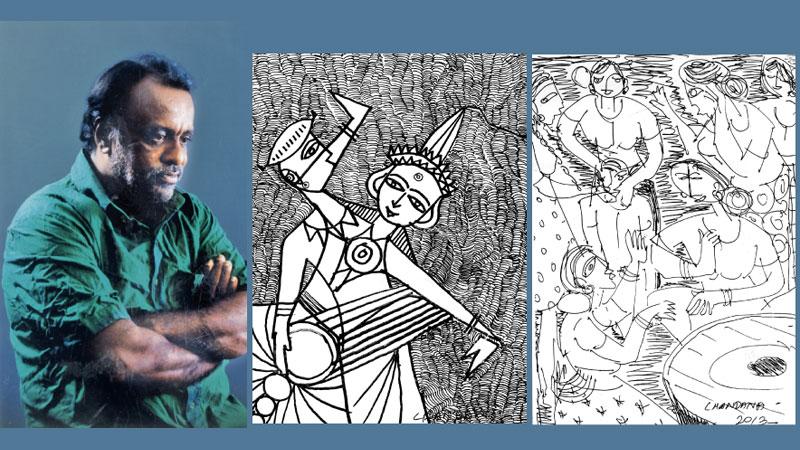
The ‘line’ which the Magdalenian artist used in his pre-historic drawings in the Lasco caves in France has been the base element of all three fields of art, namely, drawing, painting and sculpture, for the past thousands of years up to the modern age. This has been true about architectural drawings and industrial designs as well. Artists and craftsmen use line to sketch the basic form of their creative experience.
Great Renaissance masters like, Michelangelo Buonarotti, Raphael Sanzio, Sandro Botticelli, Titian (Tizian Vecelli) and the naturalist and abstract artists of modern age: Pablo Picasso, Henri Matisse, Henri Moore, Vincent van Gogh, and Amadeus Modigliani used line to study their intended creation. This introduction of ‘line’ is just a prelude to a short critique of Chandana Ranaweera’s – line drawings.
Chandana’s medium is the ballpoint pen. He draws with the ballpoint pen which is generally meant for writing. His lines portray an artist who is very much free in his work and liberal with his fancy, not confined by the scholastic theories of art. The themes of his art are built around aspects of culture, such as, religious beliefs and religious rites of folklore.
His lines do not have a continuous flow-they are speedy, intermittently broken bold lines which contribute to form straight geometric shapes. In some drawings, you could see areas of monotones created by many broken lines drawn close to each other.
The technique of his art is his own invention; spontaneity of his creativity is overtly visible.
He could add much lustre to his skill by observing the basics of both oriental and occidental art and studying the ancient drawings associated with the temples and shrines which are part of our visual art culture.
Amal Shantha Munindradasa
